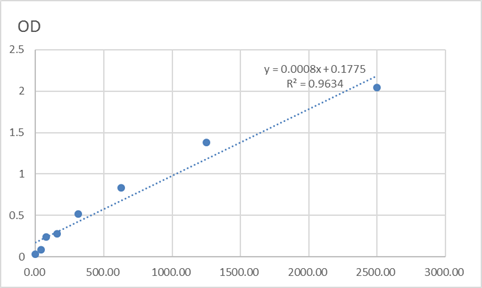Total GAD-65/67 Cell-Based Colorimetric ELISA Kit
- Catalog No.:KA3268C
- Applications:ELISA
- Reactivity:Human;Mouse
- Gene Name:
- GAD1/GAD2
- Human Swiss Prot No:
- Q99259/Q05329
- Storage Stability:
- 2-8°C/6 months
- Detection Method:
- Colorimetric
- Background:
- catalytic activity:L-glutamate = 4-aminobutanoate + CO(2).,cofactor:Pyridoxal phosphate.,disease:Defects in GAD1 are the cause of autosomal recessive symmetric spastic cerebral palsy (SCP) [MIM:603513]. Cerebral palsy (CP) is an heterogeneous group of neurological disorders of movement and/or posture, with an estimated incidence of 1 in 250 to 1'000 live births, making CP one the commonest congenital disabilities. Non-progressive forms of symmetrical, spastic CP have been identified, which show a Mendelian autosomal recessive pattern of inheritance. Patients present developmental delay, mental retardation and sometimes epilepsy as part of the phenotype.,function:Catalyzes the production of GABA.,online information:Glutamate decarboxylase entry,similarity:Belongs to the group II decarboxylase family.,subunit:Homodimer.,tissue specificity:Isoform 3 is expressed in pancreatic islets, testis, adrenal cortex, and perhaps other endocrine tissues, but not in brain.,
- Function:
- regulation of neurotransmitter levels, succinate metabolic process, glutamate metabolic process, glutamate catabolic process, glutamate decarboxylation to succinate, cell-cell signaling, synaptic transmission, cellular amino acid catabolic process, glutamine family amino acid metabolic process, glutamine family amino acid catabolic process, amine catabolic process, organic acid catabolic process, protein-cofactor linkage, transmission of nerve impulse, neurotransmitter metabolic process, neurotransmitter biosynthetic process, dicarboxylic acid metabolic process, carboxylic acid catabolic process, neurological system process,
- Expression:
- [Isoform 1]: Expressed in brain. ; [Isoform 3]: Expressed in pancreatic islets, testis, adrenal cortex, and perhaps other endocrine tissues, but not in brain.
- June 19-2018
- WESTERN IMMUNOBLOTTING PROTOCOL
- June 19-2018
- IMMUNOHISTOCHEMISTRY-PARAFFIN PROTOCOL
- June 19-2018
- IMMUNOFLUORESCENCE PROTOCOL
- September 08-2020
- FLOW-CYTOMEYRT-PROTOCOL
- May 20-2022
- Cell-Based ELISA│解您多样本WB检测之困扰
- July 13-2018
- CELL-BASED-ELISA-PROTOCOL-FOR-ACETYL-PROTEIN
- July 13-2018
- CELL-BASED-ELISA-PROTOCOL-FOR-PHOSPHO-PROTEIN
- July 13-2018
- Antibody-FAQs



